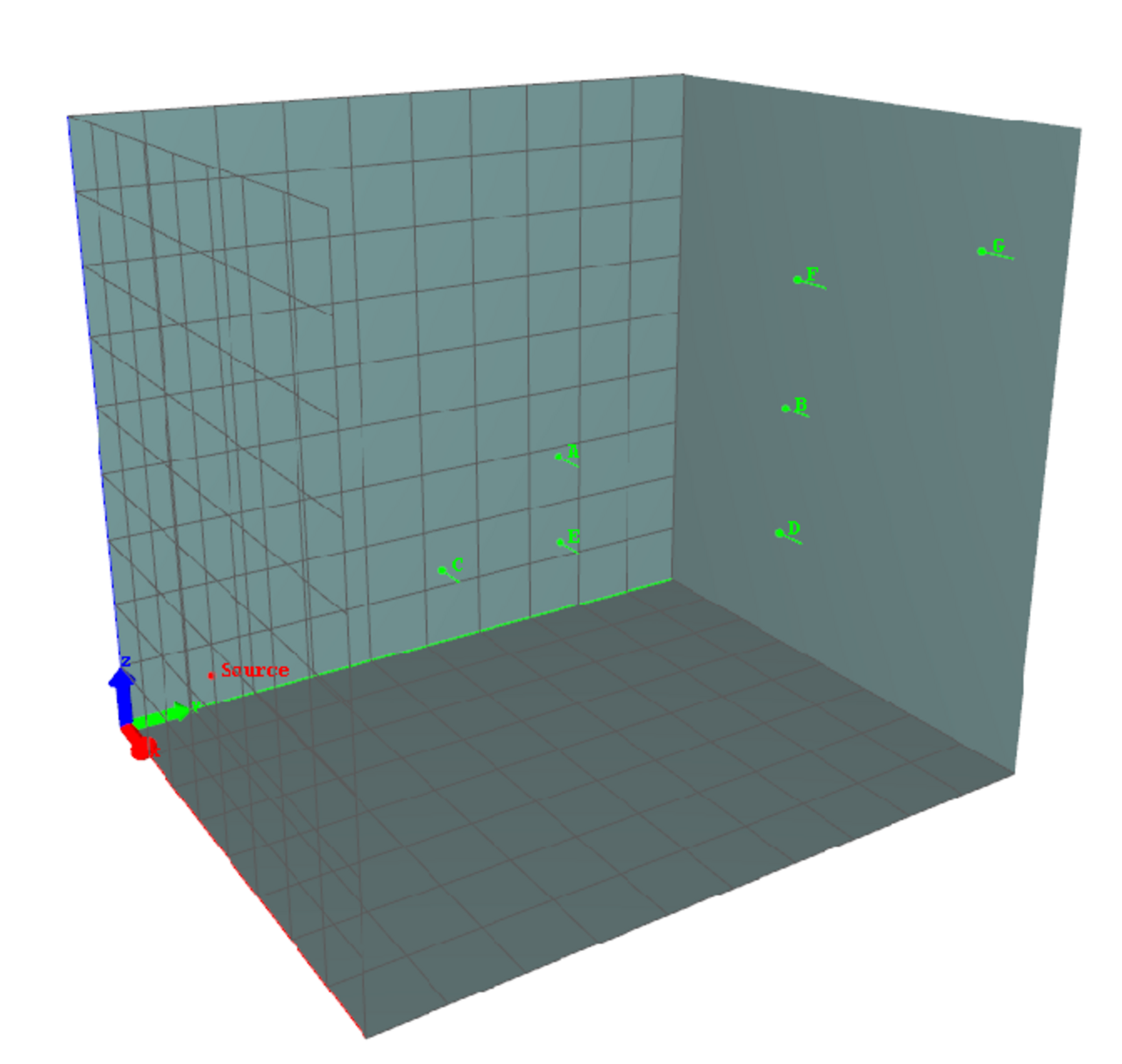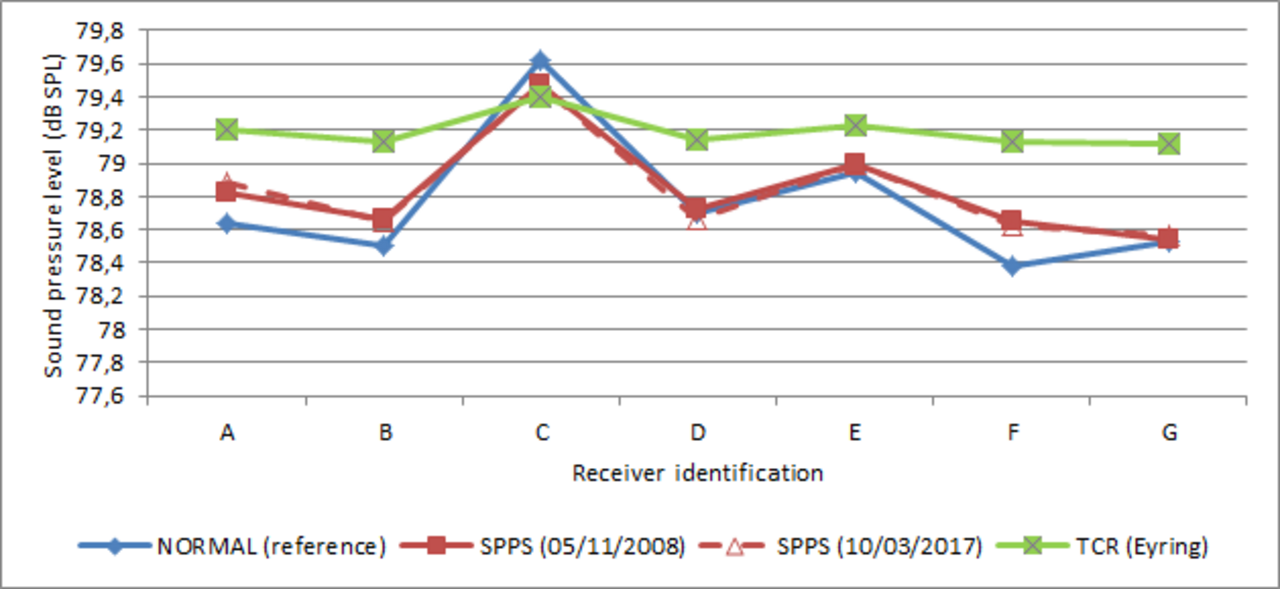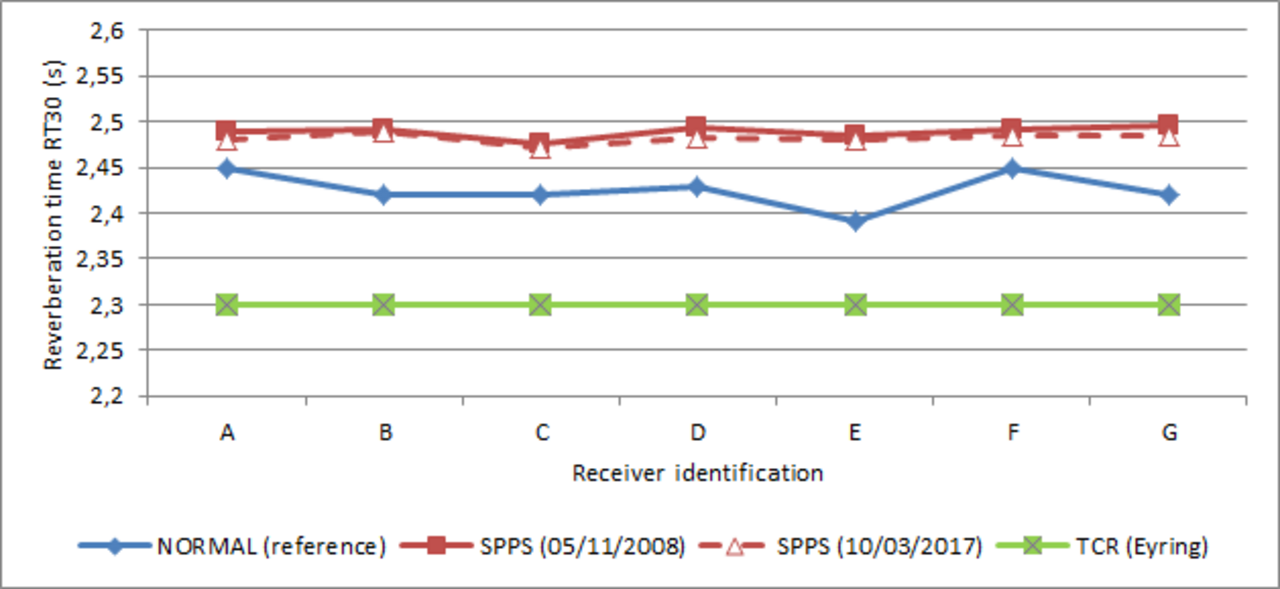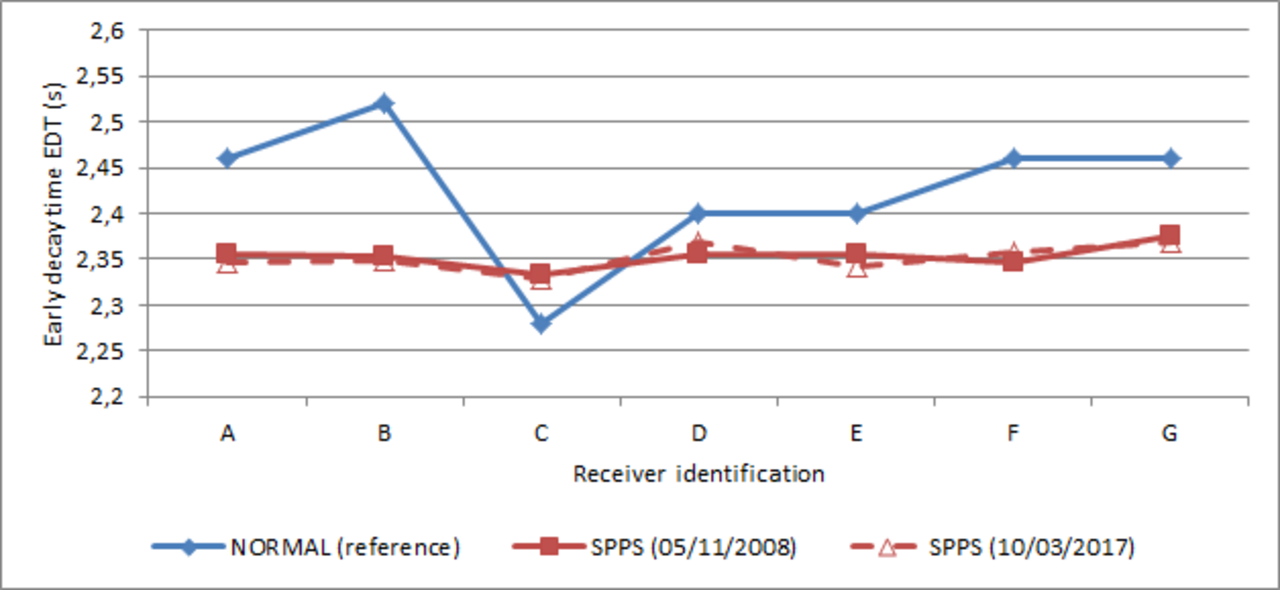All elements of this simulation are licensed under Licence Creative Commons Attribution 4.0 International License.
Quasi-cubic room with specular reflection and uniform absorption
Reference
Description
Academic case: Quasi cubic room (8m x 10m x 9m) with specular reflection (no diffusion) and 10% uniform surface absorption, with a single source and 7 punctual receivers
What is tested?
Comparison between simulations and results from the NORMAL code described in [Yang, 2000].
[Yang, 2000] L.N. Yang, B.M. Shield, Development of ray tracing computer model for the prediction of the sound field in long enclosures, Journal of Sound and Vibration, Volume 229, Issue 1, 2000, Pages 133-146, ISSN 0022-460X, dx.doi.org/10.1006/jsvi.1999.2477.
Reference
CAUTION - The following results present comparisons between numerical simulations carried out with I-Simpa and 'reference' data available in the scientific literature.
- It is difficult to prejudge the concept of 'reference'. The deviation between the simulations and the reference data that can be observed do not necessarily call into question the corresponding simulations but can also be associated with other sources of deviation (modeling assumptions, numerical instabilities, experimental uncertainties, etc.).
- Note also that these comparaisons can also show the limitations of some numerical codes.
Results
Sound pressure level (SPL)
Regarding the y-scale for the sound pressure level (SPL) results, one can see a very good agreement between the SPPS code, as well as the TCR code, with the reference results (NORMAL code).
Reverberation time (RT30)
Here again, the SPPS code and the reference data are very closed together. The TCR code (Eyring formulae, i.e. with a constant value for all receivers) gives values slightly below.
Early decay time (EDT)
Regarding the y-scale of the early decay time (EDT), the SPPS code and the reference data are very closed. One can however observe quasi-uniform value for all receiver locations with the SPPS code, while there are small variations with the reference data.
Calculation parameters
Reference
| Parameters | Value |
|---|---|
| Active calculation of Atmospheric absorption | NO |
| Active calculation of diffusion by fitting objects | NO |
| Active calculation of direct field only | NO |
| Active calculation of transmission | NO |
| Calculation method | Energetic |
| Limit value of the particle extinction | 5.0 |
| Number of sound particles per source | 1 000 000 |
| Number of sound particles per source (display) | |
| Random initialization number | |
| Receiver radius | 0.31 |
| Simulation length (s) | 3.000 |
| Time step (s) | 0.002 |
Reference
| Parameters | Value |
|---|---|
| Active calculation of Atmospheric absorption | NO |
What is tested?
Comparison between SPPS/TCR and data from the NORMAL code described in [Yang, 2000].
Quasi-cubic room
Academic case: Quasi cubic room (8m x 10m x 9m) with specular reflection (no diffusion) and 10% uniform surface absorption, with a single source and 7 punctual receivers.





